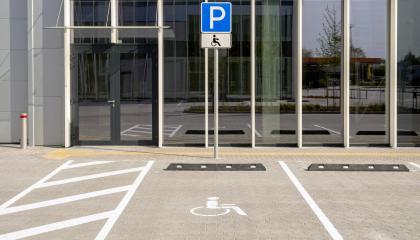Every year in the U.S., more than 40,000 cyclists are injured in traffic collisions, a grim reminder that urban infrastructure is still catching up to the needs of people who walk, bike, or navigate with mobility aids.
As organizations adapt their internal policies and culture to reflect evolving understandings of inclusion, it is essential that legal obligations, especially those tied to accessibility, are not diluted in the process. While Diversity, Equity, and Inclusion (DEI) strategies are valuable in fostering awareness and improving representation, they are not a substitute for federally mandated accessibility measures.
Disability does not discriminate. Whether temporary or permanent, visible or invisible, a disability can affect anyone, at any point in life. That is why accessibility must be recognized not as a passing metric, but as a civil right, a public good, and a shared responsibility across every sector of society.
When it comes to accessibility in public spaces, many people know about the Americans with Disabilities Act (ADA), but few understand the network of agencies, guidelines, and technical systems that make the ADA enforceable. These are not DEI initiatives or institutional goals, they are codified legal processes. Here is how the ADA, the U.S. Access Board, and PROWAG work together to ensure public spaces are built for everyone.
Beyond the well-known Americans with Disabilities Act (ADA), there are other critical frameworks and institutions that help guide the development of accessible public spaces in the United States. Chief among them are the U.S. Access Board and the Public Rights-of-Way Accessibility Guidelines (PROWAG). These regulatory tools and institutions are not part of broader DEI frameworks, but rather are foundational to federal civil rights law as it pertains to accessibility.
In recent months, there has been growing confusion about what falls under the umbrella of Diversity, Equity, and Inclusion (DEI). Some are now suggesting that accessibility laws like the Americans with Disabilities Act (ADA) should be grouped with DEI initiatives under labels like “DEIA,” an approach that risks undermining decades of legal precedent. But the ADA is not merely a DEI policy.
Color Blindness Awareness Month is a time to raise awareness about color vision deficiency (CVD) and its impact on daily life. Around 1 in 12 men and 1 in 200 women worldwide experience some form of color blindness, making it crucial for public spaces to consider their needs in urban planning and design.
As we step into fall, we honor an invaluable part of our community—service dogs. National Service Dog Month recognizes these highly trained animals that assist individuals with disabilities, promoting independence and enriching lives in ways we often take for granted.
Parking lots are often overlooked when considering pedestrian safety, but they are busy areas with constant interaction between vehicles and pedestrians. This interaction can be hazardous, especially for individuals with visual impairments. Ensuring that these environments are safe and accessible for everyone is not just a legal requirement but a moral imperative. Detectable warning surfaces (DWSs) are worthwhile in achieving this goal, providing necessary cues to navigate these spaces safely.
Pagination
Connect with us
We pride ourselves on our customer service, and we'd love to hear from you! Sign up for our newsletter to keep up with industry updates and trends, as well as any new product releases.














